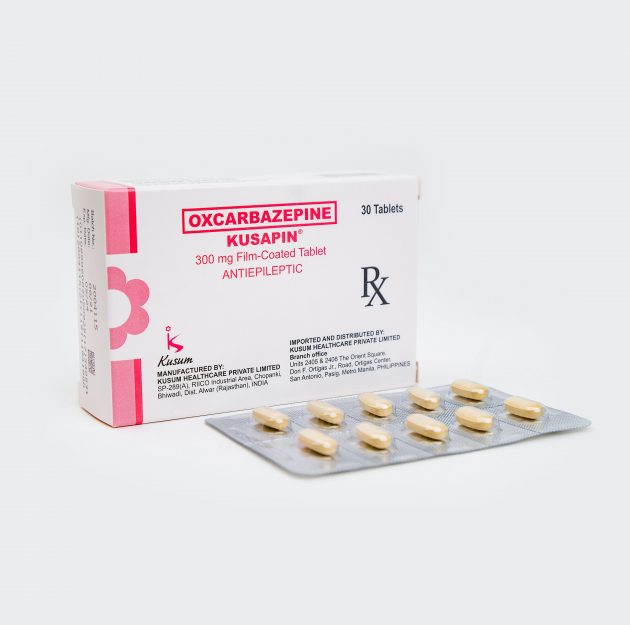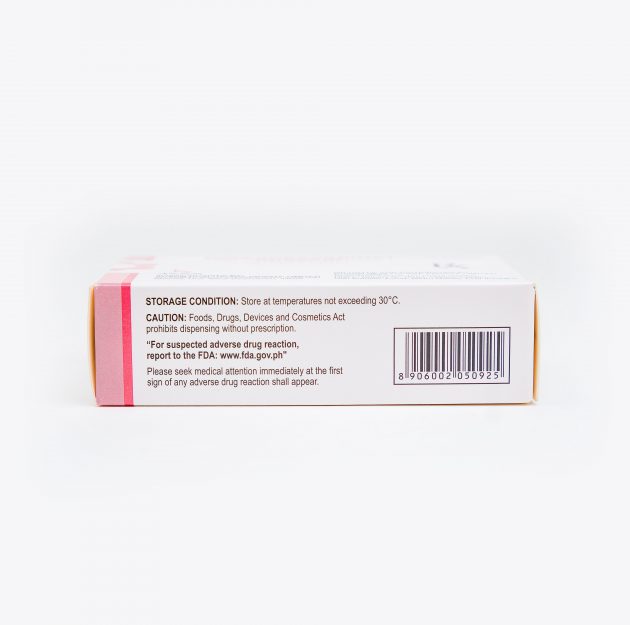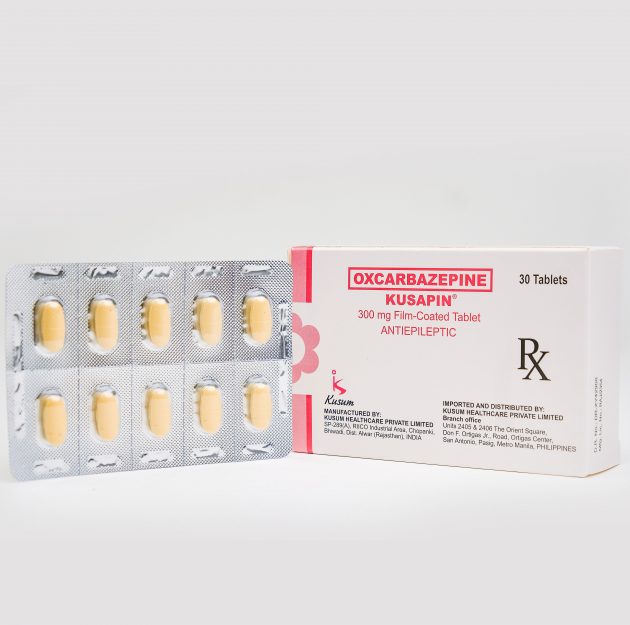Dosage and Administration :
Posology: In mono- and adjunctive therapy, treatment with Kusapin is initiated with ® a clinically effective dose given in two divided doses. The dose may be increased
depending on the clinical response of the patient. When other antiepileptic medicinal products are replaced by Kusapin®, the dose of the concomitant antiepileptic medicinal product(s) should be reduced gradually on initiation of Kusapin® therapy. In
adjunctive therapy, as the total antiepileptic medicinal product load of the patient is increased, the dose of concomitant antiepileptic medicinal product(s) may need to be reduced and/or the Kusapin® dose increased more slowly.
Therapeutic drug monitoring: The therapeutic effect of oxcarbazepine is primarily
exerted through the active metabolite 10-monohydroxy derivative (MHD) of oxcarbazepine.
Plasma level monitoring of oxcarbazepine or MHD is not routinely warranted.
However, may be useful in situations where an alteration in MHD clearance is to be expected. In such situations, the dose of Kusapin® may be adjusted (based on
plasma levels measured 2-4 hours post dose) to maintain peak MHD plasma levels < 35 mg/L.
Adults
Monotherapy
Recommended initial dose: Kusapin® should be initiated with a dose of 600 mg/day (8-10 mg/kg/day) given in 2 divided doses.
Maintenance dose: If clinically indicated, the dose may be increased by a maximum of 600 mg/day increments at approximately weekly intervals from the starting dose to achieve the desired clinical response.
Therapeutic effects are seen at doses between 600 mg/day and 2,400 mg/day. Controlled monotherapy trials in patients not currently being treated with antiepileptic medicinal products showed 1,200 mg/day to be an effective dose; however, a dose of
2,400 mg/day has been shown to be effective in more refractory patients converted from other antiepileptic medicinal products to oxcarbazepine monotherapy.
Maximum recommended dose: In a controlled hospital setting, dose increases up to 2,400 mg/day have been achieved over 48 hours.
Adjunctive therapy
Recommended initial dose: Kusapin® should be initiated with a dose of 600 mg/day (8-10 mg/kg/day) given in 2 divided doses.
Maintenance dose: If clinically indicated, the dose may be increased by a maximum of 600 mg/day increments at approximately weekly intervals from the starting dose to achieve the desired clinical response.
Maximum recommended dose: Daily doses from 600 to 2,400 mg/day have been
shown to be effective in a controlled adjunctive therapy trial, although most patients were not able to tolerate the 2,400 mg/day dose without reduction of concomitant antiepileptic medicinal products, mainly because of CNS-related adverse events.
Daily doses above 2,400 mg/day have not been studied systematically in clinical trials.
Elderly (65 years old and above)
No special dose recommendations are necessary in elderly patients because therapeutic doses are individually adjusted. Dosage adjustments are recommended in elderly patients with renal impairment (creatinine clearance <30 ml/min) (see information below on dosage in renal impairment).
Close monitoring of sodium levels is required in patients at risk of hyponatremia.
Patients with hepatic impairment
No dosage adjustment is required for patients with mild to moderate hepatic impairment. Kusapin® has not been studied in patients with severe hepatic impairment, therefore, caution should be exercised when dosing severely impaired patients.
Patients with renal impairment
In patients with impaired renal function (creatinine clearance less than 30 ml/min) Kusapin® therapy should be initiated at half the usual starting dose (300 mg/day) and
increased, in at least weekly intervals, to achieve the desired clinical response.
Dose escalation in renally impaired patients may require more careful observation.
Paediatric population
Recommended initial dose: In mono- and adjunctive therapy, Kusapin® should be
initiated with a dose of 8-10 mg/kg/day given in 2 divided doses.
Maintenance dose: In adjunctive therapy trials, a maintenance dose of 30-46 mg/kg/day, achieved over two weeks, is shown to be effective and well tolerated in
children. Therapeutic effects were seen at a median maintenance dose of approximately 30 mg/kg/day.
Maximum recommended dose: If clinically indicated, the dose may be increased by a maximum of 10 mg/kg/day increments at approximately weekly intervals from the starting dose, to a maximum dose of 46 mg/kg/day, to achieve the desired clinical
response.
Kusapin® is recommended for use in children of 6 years of age and above. Safety and efficacy have been evaluated in controlled clinical trials involving approximately 230 children aged less than 6 years (down to 1 month). Kusapin® is not recommended in
children aged less than 6 years since safety and efficacy have not been adequately demonstrated.
All the above dosing recommendations (adults, older people and children) are based on the doses studied in clinical trials for all age groups. However, lower initiation doses may be considered where appropriate.
Method of administration: The tablets are scored and can be broken in two halves in order to make it easier for the patient to swallow the tablet. However, the tablet cannot be divided into equal doses.
Kusapin® can be taken with or without food.









